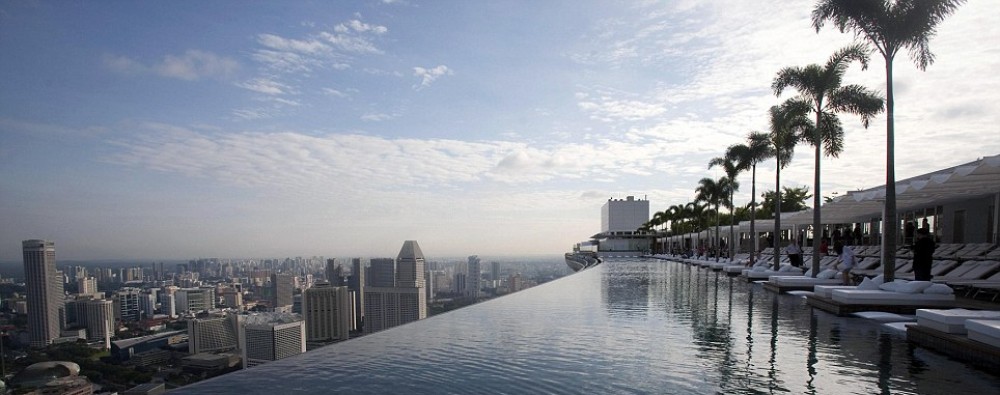The National Museum of Singapore (Chinese: 新加坡国家博物院) is a national museum in Singapore and the oldest museum in Singapore. Its history dates back to 1849 when it was started as a section of a library at Singapore Institution. After several relocations, the Museum was relocated to its permanent site atStamford Road at the Museum Planning Area in 1887.
The Museum is one of the four national museums in the country, the other three being the two Asian Civilisations Museums at Empress Place Building and Old Tao Nan School, and the Singapore Art Museum. The museum focuses on exhibits related to the history of Singapore. The Museum was named the National Museum of Singapore in 1965. For a brief period between 1993 and March 2006, it was known as the Singapore History Museum, before reverting to its previous name. The Museum underwent a three-and-a-half-year restoration and reopened on December 2, 2006, with the Singapore History Gallery opening on December 8 of the same year.
The revamped National Museum was officially opened by former President of Singapore S R Nathan and Minister for Information, Communications and the ArtsLee Boon Yang on 7 December 2006.
History
The museum was established in 1849 by the then Singapore Institution Committee. It was called the Raffles Library and Museum and it exhibited items of historical and archeological value in Singapore and Asia. The museum was part of an establishment of a public repository of knowledge of Malayan in a school, museum and library. This objective can be traced to a 1823 meeting called by Sir Stamford Raffles, the founder of modern Singapore, to discuss a revival of the region’s cultural heritage. The museum occupied a section of the library of the Singapore Institution, later became theRaffles Institution. In 1874, the museum moved to the Town Hall (now known as the Victoria Theatre and Concert Hall). However, due to the growing collection in the museum, it moved back to the Singapore Institution in 1876 situated at the new wing of the institution.
The Raffles Library and Museum later moved to Stamford Road in a new building that was commissioned by the colonial government in 1882. The museum was officially opened on 12 October 1887 which also marked the Golden Jubilee ofQueen Victoria. The library was referred to by the locals in Malay as Rumah Kitab (house of books) or Tempat Kitab(place of books). The museum was designed by Sir Henry McCallum but a scaled down version was used as the Colonial Office rejected the initial proposal, Major J.F. McNair co-designed the later version.
In its early years, the museum was well known for its zoological and ethnographic collections of Southeast Asia especially Malaya and British Borneo before the World War II. The museum was a centre of research and knowledge, directors and curators were by and specialists of good research accomplishments including zoologists Richard Hanitsch, John Moulton, Cecil Boden Kloss, Frederick Chasen andanthropologists HD Collings and Gibson-Hill who were also interested in ornithology, Malay history, ethnography and photography. The museum was the seat of the editorial office of the Journal of the Malayan Branch of the Royal Asiatic Society, it was visited by scholars who were en route to their trips to Malaya and Indonesia. The collections included a selection of northern Nias objects from the field trips of Elio Modigliani, as well as the basketwork gifted by Dr William Abbott, who collected them during the 1900s for the United States National Museum, later the Smithsonian Institution.
Extensions were carried out in 1906, 1916, 1926 and 1934 due to the inadequate space for the growing number of artefacts and books. During the Japanese Occupation, the place was left intact by the Japanese occupying army due to the reputation of its Raffles collection and research integrity. The museum split from the library, with the latter forming the National Library adjacent to the museum building in 1960 which was demolished and relocated to Victoria Street in 2005, the former was housed in the Stamford Road building.
After Singapore’s independence in 1965, the museum focused its collection to nation-building and the history of Singapore and was renamed the National Museum. Its zoological collections was moved to thebiology department of the National University of Singapore and to some museums such as in Kolkata in India and Kuala Lumpur in Malaysia. This all happened in 1969. Its most iconic artifact was theskeleton of a blue whale found in Port Dickson in 1893 and was displayed from 1903 to 1969. The museum then featured exhibits on history, ethnology and arts of Singapore and the region.
Hawpar Group donated a jade collection in January 1980. Restoration works of the building were carried out in 1985 which included a repainting of the building and restoring some of the distinctive features. After restoration, the museum was gazetted as a national monument on 14 February 1992. The museum came under the management of the National Heritage Board in 1993 and was renamed the Singapore History Museum becoming the flagship of the four national museums in Singapore. The building was closed in April 2003 for extension and restoration works and the museum was temporarily relocated toRiverside Point where an exhibition known as Rivertales was displayed.
http://singart.com/wp-content/uploads/2012/08/NSM.jpg
http://en.wikipedia.org/wiki/National_Museum_of_Singapore

